The Bondi 4 is the quintessential Hoka, with all the necessary ingredients of Hoka One One’s maximal midsole alchemy. Its stack heights (33 mm rear, 29 mm front) towers above most, and is rivaled only by its closest relative – the Stinson.
Like how most Hoka shoes are, a sideways view reveals its rockered profile. Metarocker, they call it. And then you have the characteristic upper fit, the chief pain-point of which is a very narrow forefoot. This peculiar quirk has now become a de facto feature of all Hoka One One shoes, something which everyone loves to hate but eventually learn to live with.
Hoka’s tight fitting upper is everyone’s number one grouse, and finally there are signs of change. We bought this shoe in February (yes, that long ago) so that we could form a well-rounded perspective of Hoka’s line-up. Today we’re reviewing it simply because $150 is a lot of cash to spend with nothing to show for. Better late than never, isn’t that how the saying goes?
When we bought the Bondi 4, it came in only one standard forefoot cramping size. Which was Hoka’s idea of a ‘D’ width, a claustrophobic fit likely inspired by a torture device straight out of medieval Europe.
But there’s a faint glimmer of hope on the horizion, as the Bondi 4 turns out to be the first Hoka shoe sold in an optional 2E width. This is a recent development, because it wasn’t so just a few months ago.
It would have been fun to review a 2E Bondi 4, but the prospect of spending another $150 doesn’t sound appealing. So the regular Bondi 4 it is, for today.
Even though the fit is a complaint area, we find the Bondi 4’s upper to be the best among all the Hoka shoes we’ve tested so far. It is important that you take the word ‘best’ with a gargantuan grain of salt, because we use that term purely in a contextual sense.
One thing which appeals to us about the Hoka Bondi 4’s upper is its consistent fit. Barring the forefoot sides, there aren’t any hot spots, and the shoe covers the foot with uniform pressure.
Two design aspects are key to this fit outcome. The first happens to be an upper with a large, uninterrupted panel of mesh, with no layers breaking the flow. Overlays are restricted to the lower parts on either sides, and around the lacing area. And there’s a lot of material on the rearfoot sides, which ends up being a positive from a support standpoint.
There’s something else which differentiates the Bondi 4 from say, a Clifton or Vanquish. The synthetic layering used on the Bondi 4 – which in this case happens to be artificial Nubuck and TPU – is thinner than materials used on other Hokas.
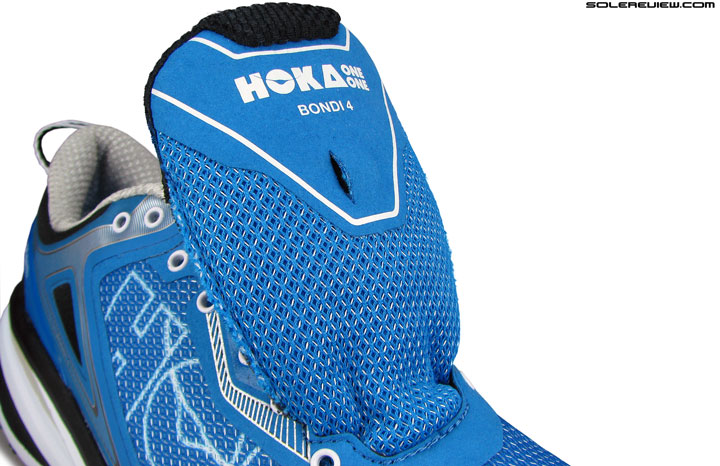
The flap is formed by turning the synthetic leather over with mesh lining . Unlike the Vanquish or Clifton 2, the tongue does not require as much time to break-in.
This helps slim down certain areas like the eye-stay, which helps the laces sit lower, hence improving the spread of top-down pressure.
And what holds true for most shoes also applies to the Hoka Bondi 4. That the lack of external layers creates a smoother and more comfortable interior environment for the foot.
The tongue top and flap is built using this same material, folded in and combined with a fabric lining. A similar construction caused much discomfort in the Vanquish, and led to a less than perfect experience on the Clifton 2.
Despite the design similarity, the tongue flap behaves better on the Bondi 4. The materials are softer than that on the Vanquish and Clifton, toning down the poking sensation. Though it definitely requires some time to properly break-in, but does so faster than the other two.
We haven’t tested the Bondi 3, but if we had to guess, the Bondi 4’s tongue is probably much comfortable than the flat, unpadded flap of the Bondi 3’s tongue.
The tongue is also short, so that prevents it from pressing into the skin. While in use, the tongue slides to one side in absence of a sleeve or a mechanism to hold it in place.
Back on the heel, Hoka has accidentally applied some common sense to make it more comfortable. Under usual circumstances, Hoka would have extended the synthetic leather right till the collar edge and then reverse fold it with the mesh lining on the inner side.
This kind of construction (Clifton 2, Vanquish) would have made the edges rather hard and uncomfortable, which would have required a longer break-in period.
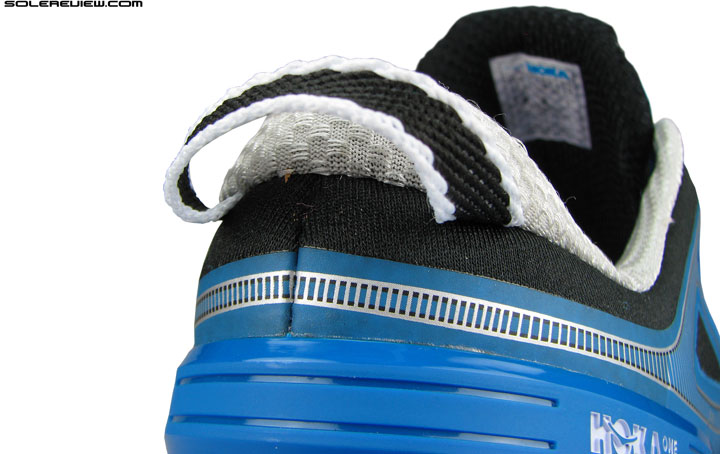
The top edge of the outside heel has this soft fabric (black), which makes the collar softer. No irritating firmness here.
Not so on the Bondi 4. It uses a very soft mesh (the visible strip of black) on the outside, which joins the inner lining at the top. So there’re no hard folds, and it closes softly around the ankles. The same treatment wraps over the heel center, so the Achilles dip also feels comfortable on the Bondi 4.
Again, we assume that this should logically be an improvement over the Bondi 3’s collar design, which did not use this soft mesh.
The laces are found wanting in grip, prone to coming untied. There are of medium firmness, but the smooth surface texture keeps the laces from being looped together.
If you’re regular patrons of the Hoka brand, then we don’t need to break-down the finer details of the infamous, narrow forefoot fit. On the other hand, a runner who’s eyeing a first time Hoka purchase would be well advised to take the whole narrow fit thing very seriously. What follows next is a quick lowdown on the state of affairs in the forefoot.
Our first Hoka experience was the original Clifton, which led to our personal discovery of the brand’s signature forefoot fit. But wearing the Bondi 4 gives a whole new spin on the word narrow.
Slip into the shoes, and there’s instant pressure on the base of the small toe. The big toe isn’t spared either. The upper closes in tenaciously on either sides, which also implies that the front-end is rather pointy.
Now a tight forefoot is not a bad thing if designed properly. It is one of the reasons which contributes to Hoka’s fast feel. If you have experience with road racing shoes of other brands, you will know that a snug fit is advantageous when cranking up pace.
But the issue with Hoka’s fit is not the tightness per se, but its hot spots applying pressure over specific areas. This happens to be over the small toe in most Hoka shoes. You don’t get that same experience in other narrow fitting shoes like the adidas adios Boost or Nike Zoom Streak 5. Those shoes are tight, but the feel is spread evenly over, and not zeroed on any particular spot.
This variation in fit is Hoka’s folly, and not the general narrowness.
Length-wise sizing fits true, and yet the narrow forefoot makes the toe-box feel cramped. Can’t speak for the Bondi 3, but considering that the toe box design has changed from a simple synthetic leather overlay to molded stiffness (like the Clifton 1 vs. 2 ), we would think that the Bondi 4’s toe-box ceiling should feel lower than Bondi 3’s.
Perhaps a reader who has run in both versions could corroborate that for us?
For the majority, the super tight forefoot will make a case for a half-upsize if 2E is unavailable in your location. Mind you, going half size up will also open up room in front of the toes.
More toe-bumper room will likely affect the ride dynamics (as your foot’s position over the midsole changes), but at least you’ll be spared the agony of the Bondi 4’s forefoot fit.
Hoka’s raison d’être is maximum cushioning, and the Bondi 4 is the brand’s perfect advocate. Its midsole stack heights are thicker than the Clifton and Vanquish, resulting in a midsole ride which can best be described as bottomless cushioning. It is the most cushioned Hoka we’ve tested so far.
One might assume that soft and cushioned are synonymous. But they aren’t, in the same way ‘stability’ and ‘motion control’ differ. A shoe might be very soft but not very cushioned; and vice versa. A couple of examples will clear this up.
Take the Nimbus 17. It is so soft that many will find the midsole nearly bottoming out on impact. That behavior, in our view, is the case of a shoe being soft but not very effective in cushioning.
The lesser known Nike LunarLaunch was another example. A crude analogy would be the difference between punching a soft pillow and a thick mattress. The pillow will bottom out, and the mattress will not. The Bondi simply muffles any possible jarring from a footstrike, rear or front.
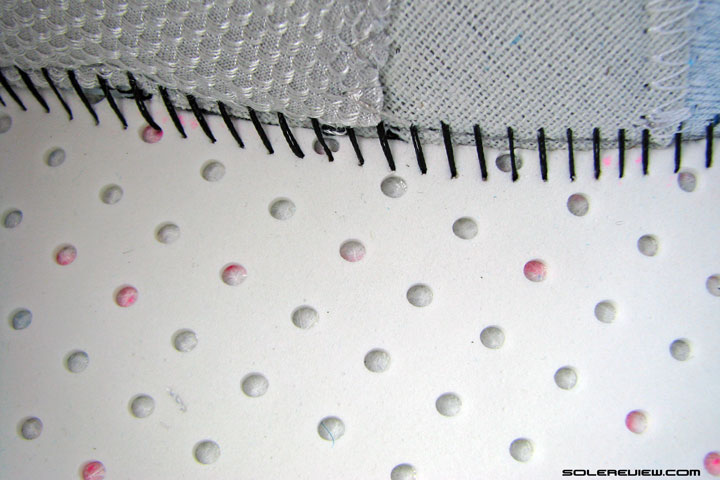
A perforated foam lasting sheet lines the midsole surface. Does its bit in enhancing the cushioning feel.
The Bondi 4 is different. It is not as soft as the Clifton, yet has a ridiculous level of cushioning depth which never seems to end. You can’t feel the ground regardless of the footstrike position, always leaving you with the feeling that there’s still a lot of midsole left to go.
This is maximal cushioning in its element, and there is a very good reason why Hoka named the shoe after Australia’s famous beach.
For a midsole this cushioned, the ride is fairly responsive. There is a level of springback experienced during each gait cycle, though the shoe’s responsiveness isn’t in the league of the firmer Vanquish (and logically the Conquest too).
What matters most is that gigantic heft of foam exhibits little to no sogginess, which works out well for transitions. You can use the Bondi for long runs without worrying about getting bogged down by the cushioning – an fine art which Hoka has perfected using a combination of design elements.
One trick out of Hoka’s playbook would be the familiar rocker shape integrated with an ultra firm forefoot (no flex at all) – which sees to it that transitions come quick and painless.
And this peculiar outsole geometry is what allows Hoka to be very cushioned yet deliver effortless weight transfers during runs.
The molded insole is comfortable, and does not crease up like how the Clifton did. Like most of Hoka shoes nowadays, you are given the option of using the flat Ortholite insole, but we wouldn’t recommend it.
One, it does funny things to the quality of upper fit, and two, the ride loses its sumptuousness. The shoe feels more complete with the thicker insole popped in. Kind of similar to what we sensed with Skecher’s optional fit approach.
There’s plenty of support available onboard the Bondi 4. All the cushioning is planted on a wide outsole base, and the compression of the midsole sidewalls is well balanced. So no leaning to one side or the other, and the foot stays where it should be – in the center. Another area worth talking about is the absolute lack of pressure points along the midsole edge.
The Clifton’s design has this tendency to apply some pressure under the arch because of the midsole waist curving inwards in this area. This is noticeable when compared with the smoother Bondi 4 or the Vanquish, where you will not encounter this idiosyncratic trait.
Much credit has to be given to the upper construction too. The heel comes with a plastic clip which works together with the high midsole walls to cradle the foot within. The narrower upper isn’t without a silver lining, hate it as you might.
The foot is securely locked down, ruthlessly pinned down in place by the unforgiving upper.
Looking at the Bondi 3 pictures, the new Bondi changes its outsole layout, rearranging the distribution of rubber lugs.
While not knowing how the Bondi 3 felt, the 2015 Bondi’s sole offers far better grip than the Clifton, Constant, Huaka and the Vanquish. Things like the presence of more rubber with grippier lugs helps the shoe hug the road with greater confidence.
The extra rubber and stack heights puts the Bondi 4’s weight somewhere between the lighter Clifton 2/Huaka and the heavier Vanquish. Regardless, 317 grams/11.2 oz is very decent for a shoe of this build level. The only part we could not understand is the huge weight differential between the left and right shoe. The left half pair is 14 grams /0.5 Oz heavier than the right. Midsole density variance? Has to be – there should be no other reason.
It only stands to reason that if you’re looking for the unadulterated Hoka cushioning experience, then the Bondi 4 is a very strong contender. It is also the ONLY Hoka shoe currently offered in a 2E width, so if the narrow fit kept you from getting a Hoka in the past, then perhaps this is the right time to kickstart your holiday shopping.
Hopefully, Hoka should start producing wide versions in other models too. About time, too.
(Disclaimer: For this review, Solereview bought the shoe at full US retail price.)

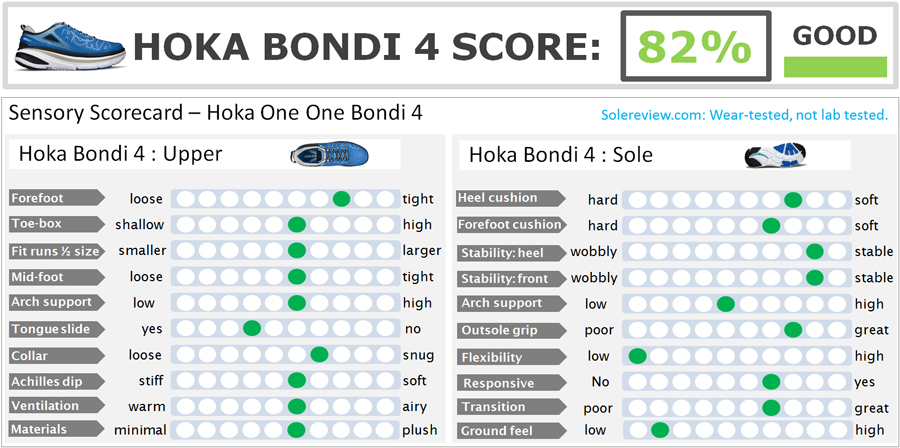
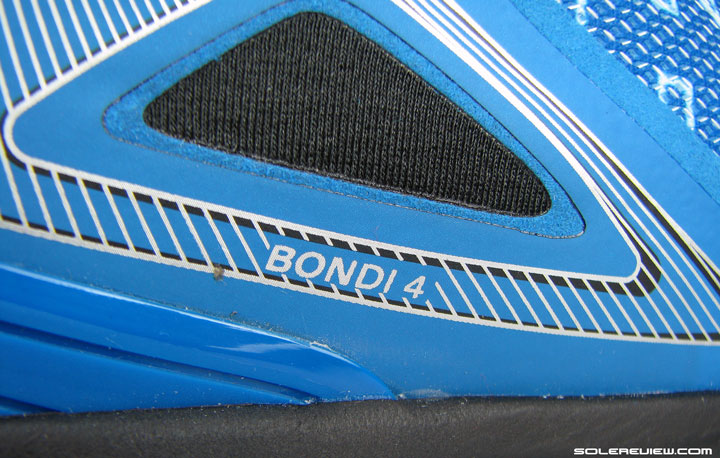
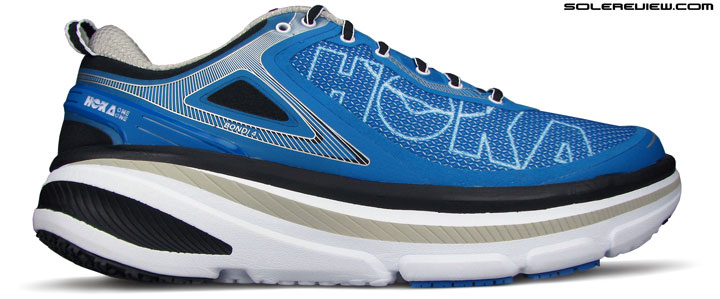
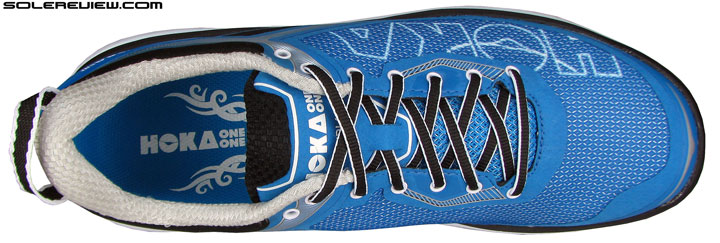
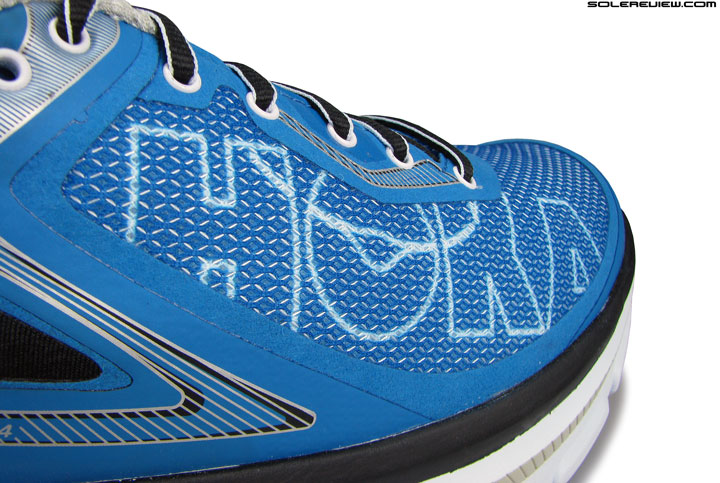
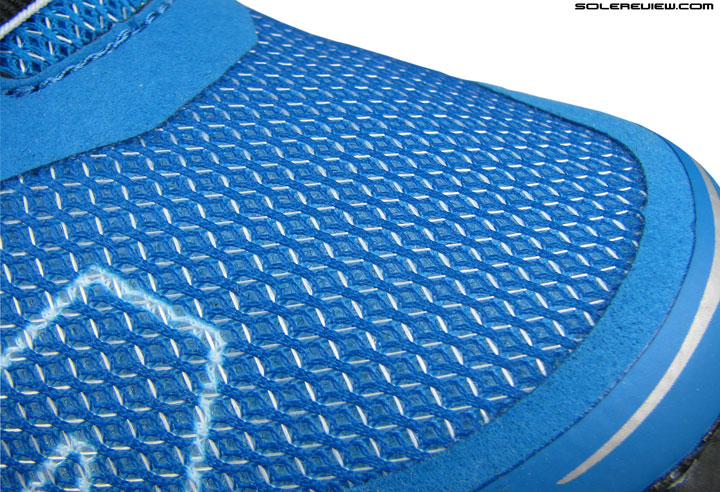
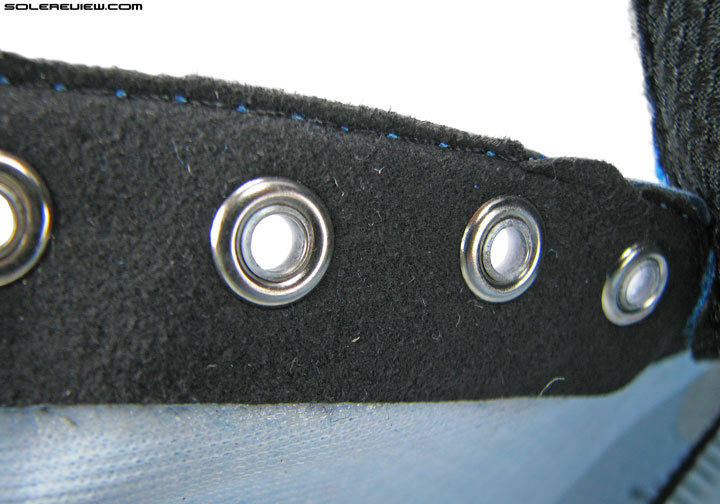
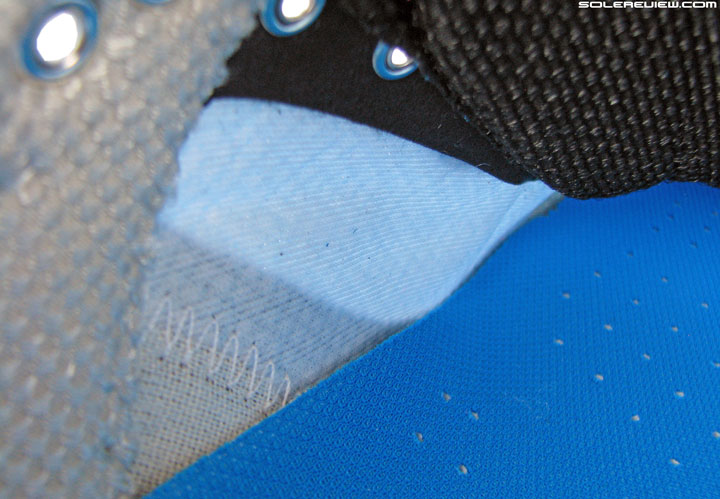
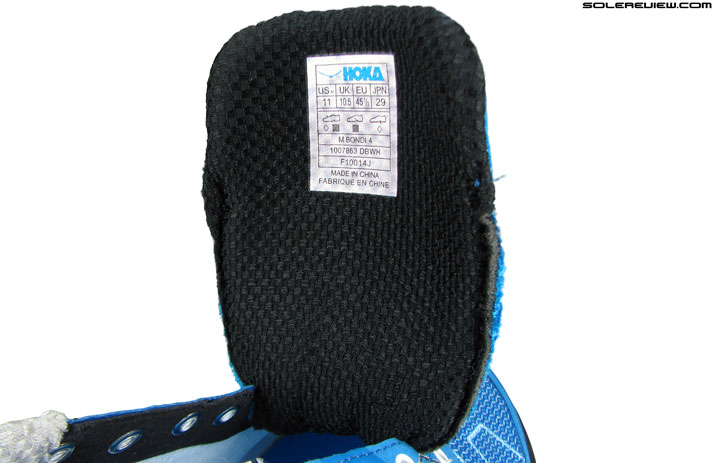
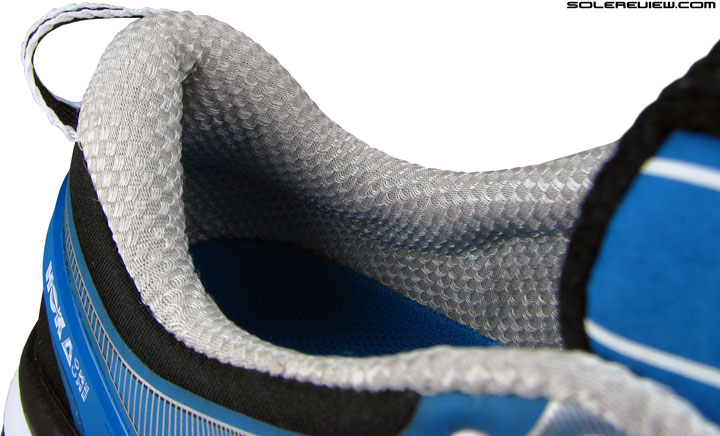
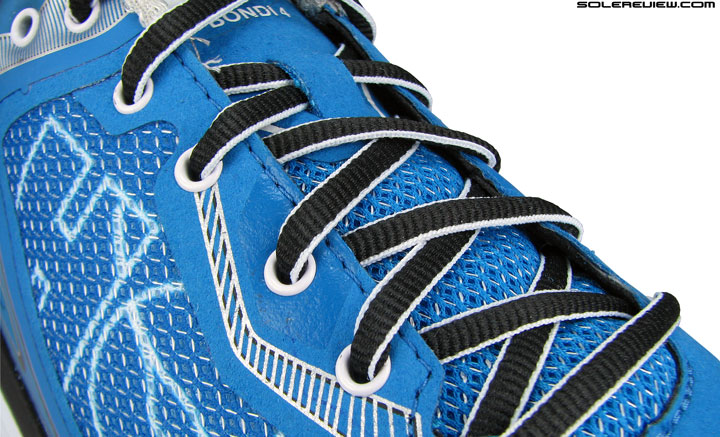
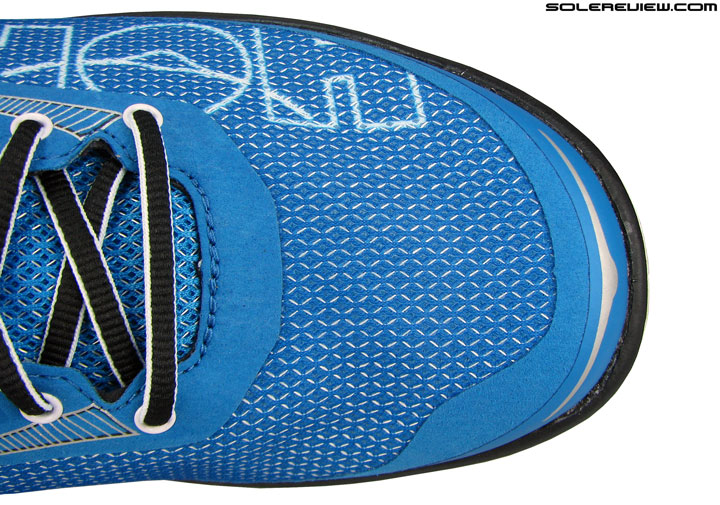
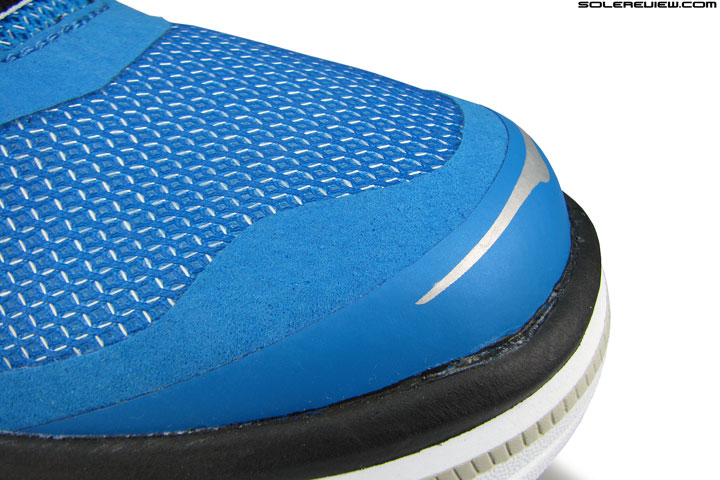
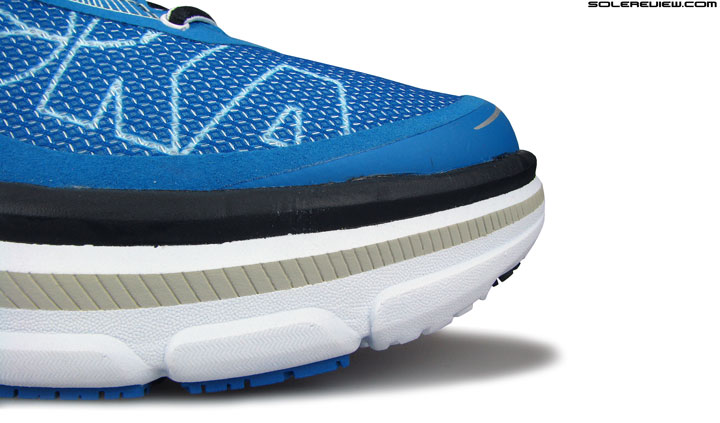
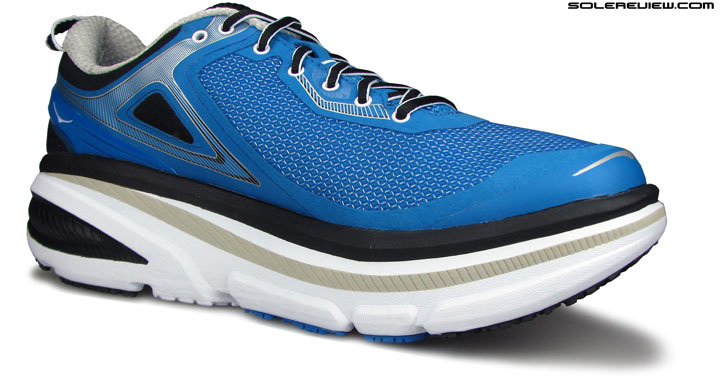
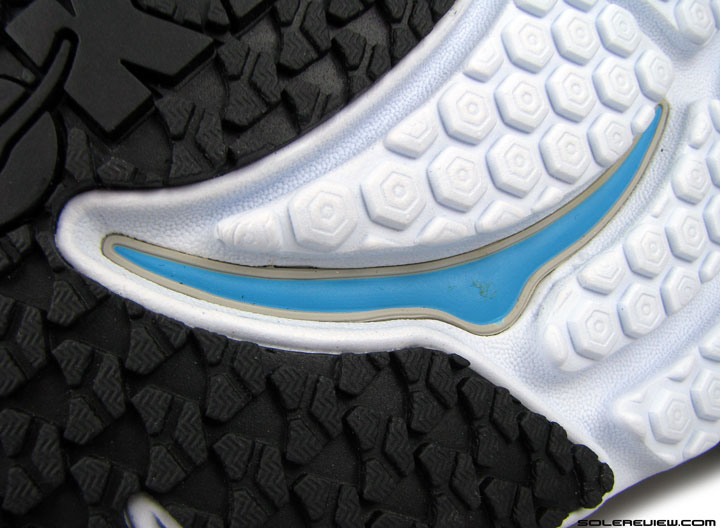
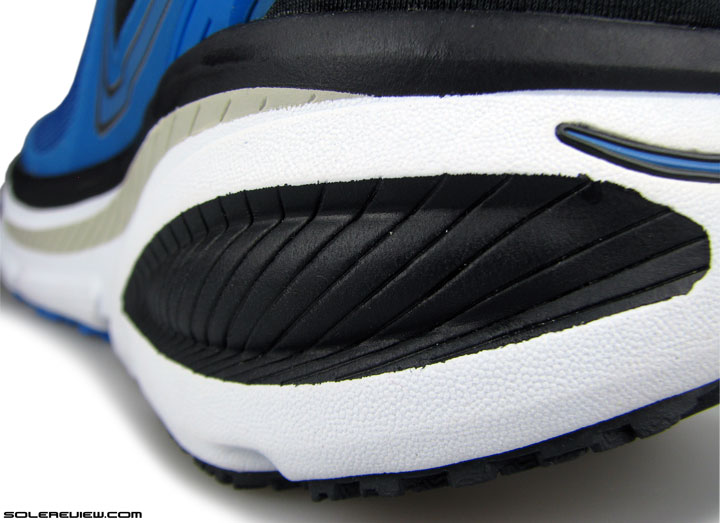
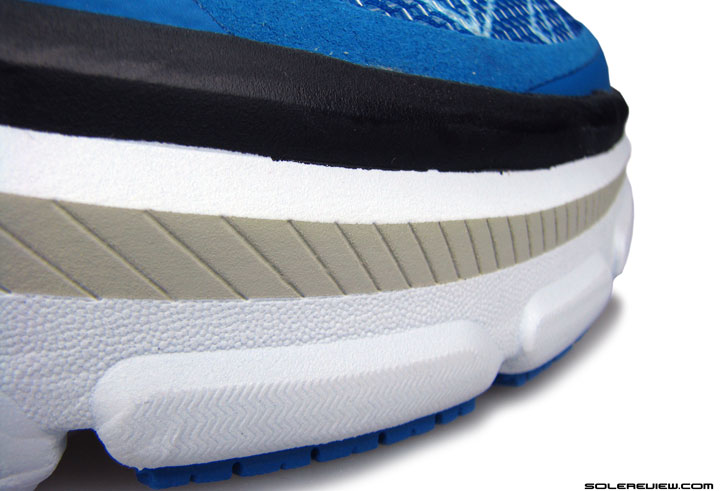
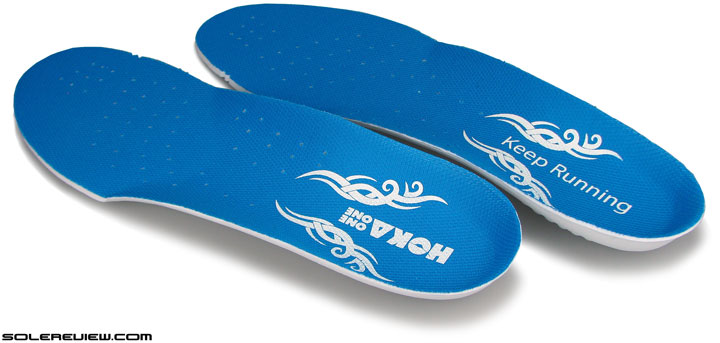

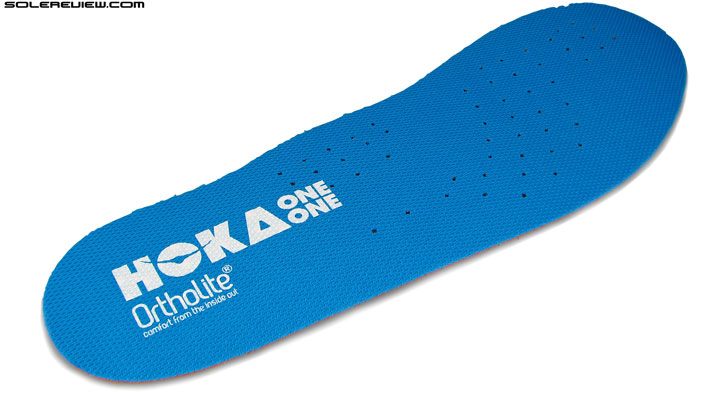
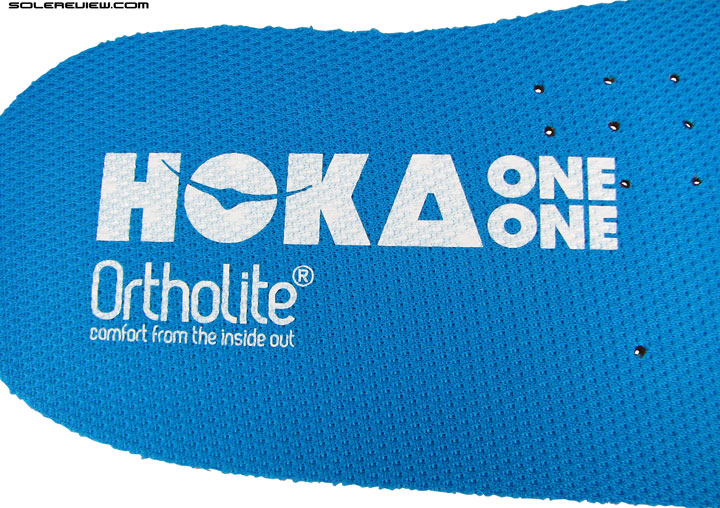
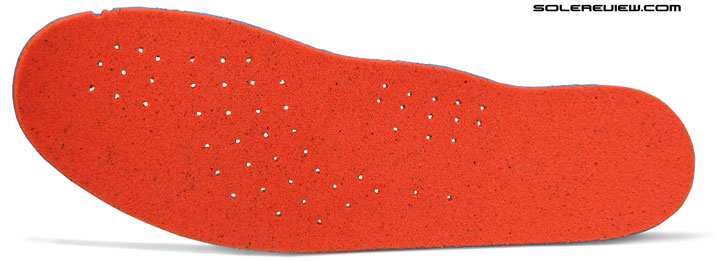
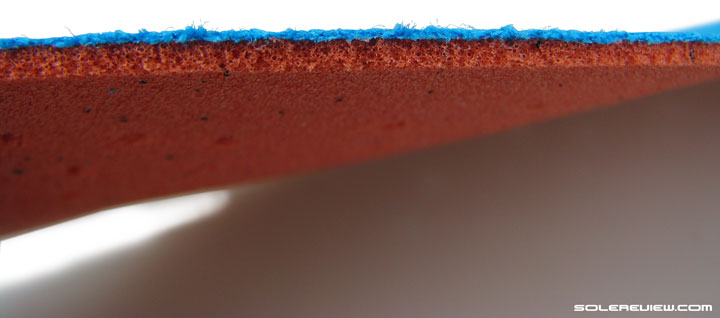
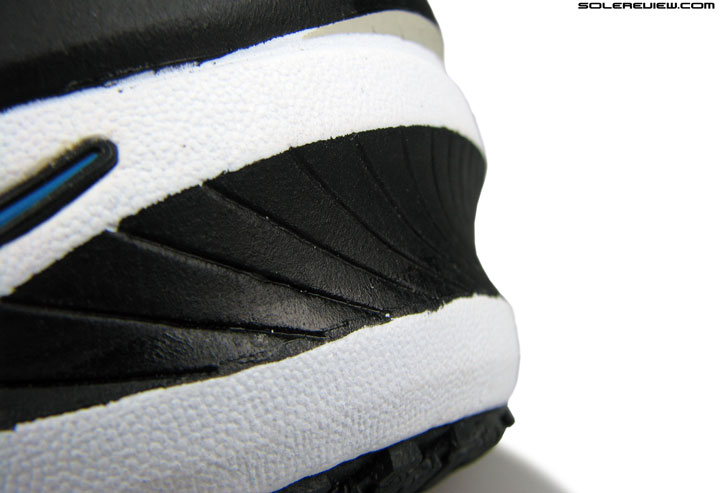
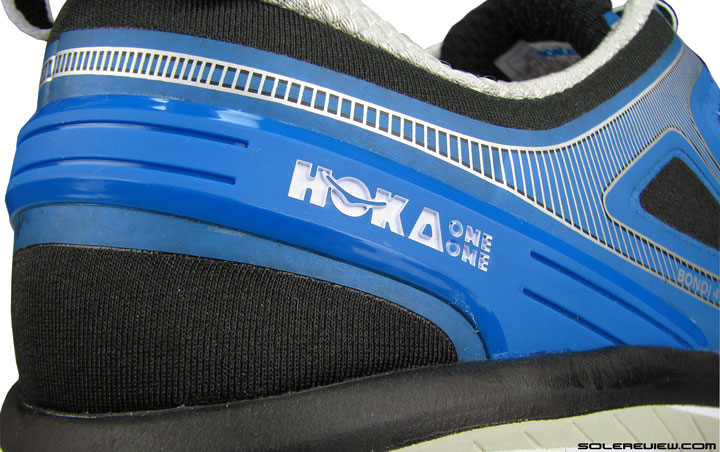
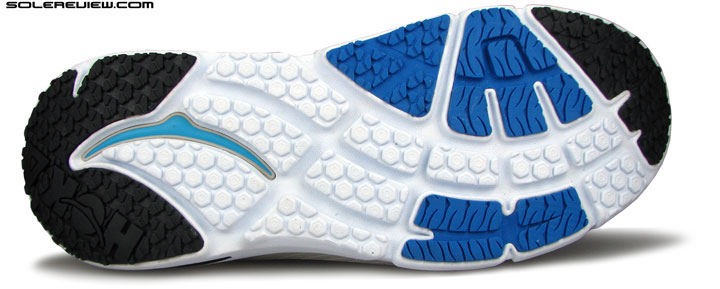
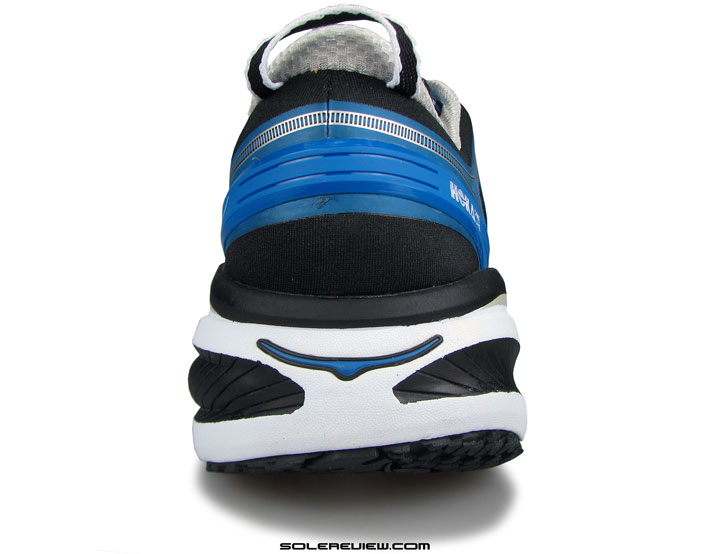
25 comments
Good review. I, like many, have a love/hate relationship with Hoka. I love the cushioning, but hate the narrowness. It causes my feet to go numb. At first I thought they just needed breaking in, but after 50 miles in the Bondi 4 it still happens on every run. On the plus side, I ran a half marathon in the Bondi and then two weeks later I ran a half marathon in my Saucony Triumph ISO, and I have to say I felt a lot better after the half marathon ran in the Bondi than I did in the Triumph. I was ready to go again the next day after the run in the Bondi. So the cushioning does make a difference for me. We can only hope that in the future Hoka will put as much research in their uppers as they do their soles. If they would, as far as I’m concerned, they’d have the best running shoes of anyone.
Hoka’s cushioning was never in doubt, and that is why people tolerate the mediocre uppers. But at least, there are signals that Hoka might do something about the fit. Offering a 2E width is a good start.
Yes, it’s a trade off now. If you can stand the uppers you’ll be rewarded with great cushioning. I’m glad they are offering 2E. Like you said, it’s at least a start. What they need to do is widen all their shoes in the foefoot area. I’ve thought about buying and trying a shoe stretching device, but not sure if it’ll work. :)
I’m not convinced that widening out the forefoot is going to work out well. With the massive stack height, you really need to get the foot locked down to the midsole. The concern is sloppy landings, and the potential for ankle sprains. At least with some wide widths, you can have it either way. We’ll see how it goes if they decide to open up the forefoot in future models.
The Conquest does not have the forefoot narrowness of the Clifton and is one of the most comfortable shoes that I have run in.
Thank you for the insights!
If you don’t like the narrowness of the Hoka give the Skechers Go Run Ultra Road. I have over 50 miles in this shoe and I LOVE them. Cushioned as well as a Hoka, has a nice toe box, and the knit upper lets your foot breath. The sole is more durable than the first versions of the GRU. Check them out as they cost less than the Hoka’s.
I’m in 100% agreement. I’ve been looking for an alternative to the Hokas (on year 4 of running in them almost exclusively). I’m really growing fond of the Ultra Road. Dare I say it has slightly more cushioning than the Bondi? The build quality is impressively good. I got them at the local Skechers outlet store for $99US.
The only small con so far is the shoe seems a little too squishy making sharp turns. I’m learning to compensate. Cinching down on the laces helps too, without putting to much pressure on the foot. Very nice shoe!
Heard a lot of good things about the GoRun Ultra road! Would love to add that to our review list, time and money allowing.
Thanks Marc. Never have checked them out before. Will have to do so.
Sad to see the Hokas are all ‘gaining’ weight; their lightness was one of their attractions for me. And then they narrowed them so now I’m leaving Hokas. Too bad but for the premium price I’ve come to expect more.
Not sure how the Bondi 4 compares vs. the B-3 in weight, but we were disappointed by the Hoka Clifton 2’s massive weight increase.
I would not exactly call it massive. I was more disappointed about the tongue and how loose I have to tie them shoelaces in order to be able to walk around in them at all without any considerable pain – alright, I only bought them as sneakers on purpose (black !!!), anyway, but I am still disappointed in that respect. As much as I accept the fact that there were people for whom the Clifton 1s did not work, I would have much preferred a slightly thicker Clifton 1 style tongue because the Clifton 2 tongue has the nasty habit of squeezing in between bones (and quite painfully so). The Stinson Lites have for example shown me how brilliant Hoka was about placing the shoelace loop of the tongue in the Clifton 1s directly underneath the knot you tie so that you have additional protection. In terms of aesthetics it was too high and looked weird at first glance. However, in terms of function it was perfect and that is why the emphasis should always be on function.
As you have gathered by now I am a bit of a Hoka fanboy, even if rather (!!!) critical. However, it is also a fact that I owe them the shoe that finally allows me to do a reasonable (tenners (km)) amount of running (the Stinson Lite – and it only took until I reached my mid-40s…). I still prefer the bike for long distances and I leave the longer running distances to my very dear sister-in-law who does ultras and I mean serious distances… Girls can be mad… Talking about girls, of course I also have the added advantage that my feet are girlishly slim and that is why I have bags (!) of room in my Hokas ;-).
Anyway, I hope that the Clifton 3 will be a kind of Clifton 1.5… Back to the roots and see where things could be improved, even if a bit more conservatively… And of course I would be immensely grateful if they were to release another black version ;-).
Hoka should know by now that you can have a thick tongue design, and not have it irritate the foot!
kindly forget about the word ‘today’ in the post below…
P.S.: I have since got hold of a camera (borrowing) and will (one of these days) provide you with photos of what I criticised about the Bondi 4s ;-)
Thank you, look forward to them!
P.S.: I have since been wearing my additional two pairs of Hoka Stinson Lites inside my flat and they are slowly becoming less alien :-).
Thank you for the wishes, Patrick, and appreciate the generous contribution! Wish you happy holidays too!
Thank you for the very detailed insights – we’ll try to see if we can grab a pair for cheap!
Hi,
What is your opinion on supposedly identical pairs of running shoes (particularly if you factor in time)? So far the pairs I mentioned have not left my flat. I am preserving them and have only been wearing them as slippers.I really (!) was surprised about how long (the odd day) it took until they actually felt familiar.
Cheers
Patrick
P.S.: Sorry about the effing and blinding in my original post;-)
Not sure we understand your question! Do you mean how long will a shoe last when left unused?
The comments/Q&A thread will be closed till Jan 17, 2016. Any inconvenience is regretted. Premium access members can continue to use their dedicated comment section, which will be open.
Can a overpronator wear this one? I am 5.5, 149lbs and overpronate. I need a lot of cushioning to stand up to my strikes.
Yes, should be no issues.
Comments are closed.